IMC Architecture, Elevated Interiors and Triple J&R
complete base building for $15m congregation
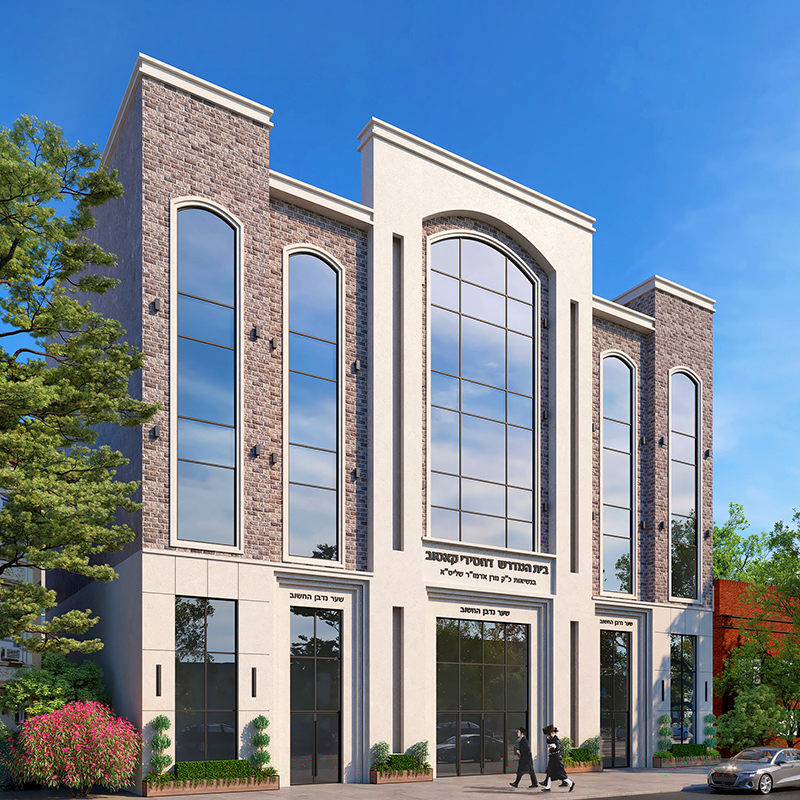
Brooklyn, NY The project team of IMC Architecture, interior designer Elevated Interiors and contractor Triple J&R accomplished a major development milestone of completing the base building phase of the new Congregation Bais Kosov shul –a synagogue and community center – currently under construction at 1355 55th St. in the Borough Park section.
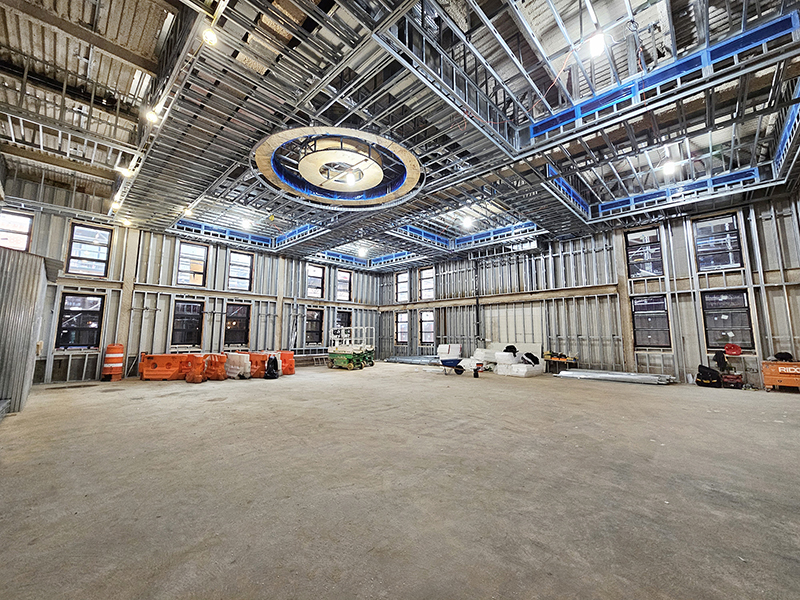
The project team has completed the building’s steel structure; exterior envelope; and mechanical, plumbing and electrical infrastructure, which combined constitute the so-called base building part of a construction project. Construction crews are currently proceeding with interior fit-out work for this important community project. Construction started in 2022 and is expected to be completed in the second half of 2024.
“The new building is a culmination of many years of planning and fundraising by our congregation. Achieving this significant milestone is a very joyful event that makes us look forward to moving into our new home later this year,” said the Congregation’s president Sol Klein.
IMC Architecture principal Dominick Casale, AIA, said, “Congregation Bais Kosov is a prominent Jewish religious and cultural institution in Brooklyn. The new, $15 million, 40,000 s/f, six-story building will serve a community of more than 300. We are very proud to contribute our design services to improving the neighborhood and achieving the client’s goal of creating a new architectural landmark and welcoming beacon for Borough Park’s community.
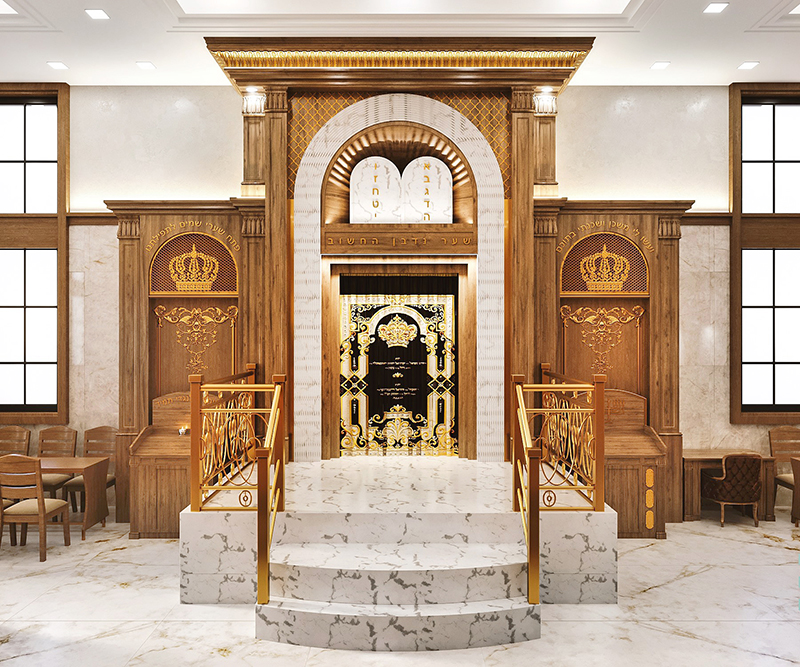
Isaac Simkowitz, COO of Guardian Realty and Congregation Bais Kosov’s board member, serves as owner’s representative for the project. “The new shul has garnered an enormous support from the community, as it will serve local families for generations to come. The community has raised all funds required for construction, allowing the congregation to build its new home without the burden of a mortgage,” he said.
The project team also includes expediter and zoning consultant CORE Consultants, MEP engineer JRS Consulting Engineers and structural engineer Cityscape Engineering.
Design and Construction
“The client and IMC’s design team opted for an architectural style that is a modern interpretation of traditional Jewish worship architecture. The façade features contextual brick and stone veneers, as brick facades are prevalent throughout the neighborhood. The stone gave the building a monolithic appearance that is indicative of a house of worship,” said Casale. “The front facade’s expansive curtain wall faces the street and includes many glazed sections that bring light into the interior, make an architectural statement, and highlight the grandeur of the building’s function. The exterior was also designed in a way that accentuates the visual perception of the building’s height and prominently displays its function in the community”.
The project occupies a 10,000 s/f site. It is adjacent to residential properties on three sides and the building’s footprint reaches the property boundaries on all four sides. It is a steel structure.
When the ownership retained IMC to design the project, there was already an existing foundation in place from an earlier design for the building by another firm. However, the Congregation’s leadership decided the design was too small and didn’t fulfill the community’s needs. IMC developed a new design for a larger building that required a redesign of the foundation. The engineering and architectural team collaborated closely to develop a design that incorporated some of the existing foundations in order to reduce the project’s schedule and cost. Ultimately, IMC constructed a deep mat and spread footing foundation that is 20% larger than the earlier design.
The synagogue will feature a series of ritual baths, educational and community use facilities and ancillary support spaces for the new religious institute throughout the building’s six stories. The basement will house three ritual pools, or mikvahs, that total 600 s/f, as well as showers, a locker room, a laundry facility, and 1,500 s/f of worship education space. Two mikvehs that are 270 s/f each will be for the congregation and the third 60 s/f mikvah will be for the rabbis to use. The mikvahs will be mainly tile and marble and will be housed in an area that showcases three matching architectural features on the walls, each including rectangular sections finished with wood grain tile surrounded by recessed LED strip lighting.
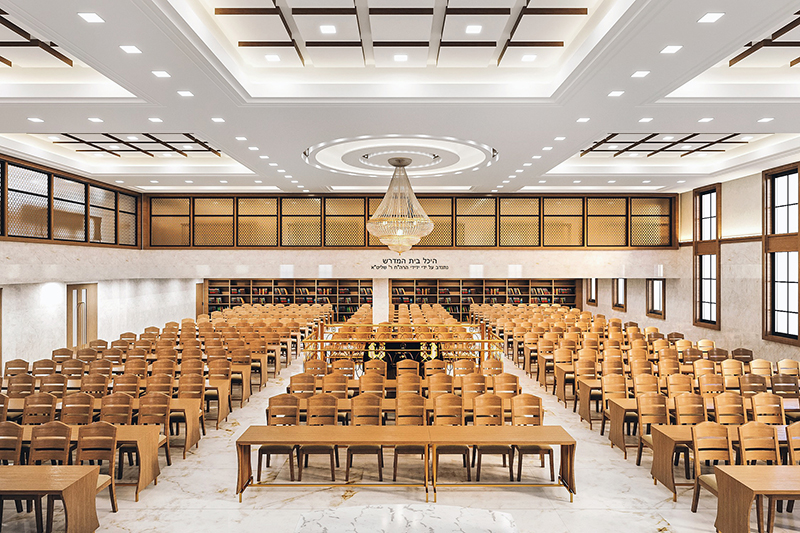
While designing the lower level section, IMC also had to review, assess, and apply the relevant regulatory requirements for the public spaces, particularly the bathing facilities in the cellar.
The first floor will feature a 5,000 s/f sanctuary worship area and includes the building’s main entrance, a rabbi’s room, a coat room, restrooms, and a vestibule for an elevator that spans all six floors above the ground and the cellar. Great acoustic characteristics within the sanctuary was a must for the client, as was a clean and luxurious interior feel.
The sanctuary will house aron qodesh, or a holy ark, which serves as a repository for the Torah. The space will feature a soaring 20-foot high coffered ceiling. The wall design will include stone tiles from the floor up to three quarters of the way up the room’s height, with drywall above it. The space will have a significant amount of high-quality millwork that was fabricated in Israel. The worship area, which has marble flooring, will also include millwork bench sitting area with tables and chairs, bookshelves on the walls, and an oversized, decorative, custom designed and fabricated chandelier.
In this section, IMC and its partners addressed architectural and engineering challenges, including meeting the client’s requirement to have the worship space be very wide, open and unobstructed by columns, and large enough to accommodate the entire community. To achieve this, IMC designed the sanctuary to occupy the entire depth of the site.
“The synagogue needed to be an open, unobstructed space full of natural light. This dictated careful consideration the building’s structural system design. The designers achieved it by specifying deep steel ceiling beams to span long distances without a need for columns. Designing other elements of the sanctuary was a challenge as well, because of the zoning-dictated height restrictions in the rear as well as the large-scale structural and mechanical components required to achieve the unobstructed worship area and provide sufficient cooling and air conditioning for such a large space,” said IMC Architecture project manager Austin Schlosser.
“IMC developed several creative design solutions to accomplish the client’s functional and aesthetic requirements. For example, using coffered ceilings helped maximize the space’s height. The lower parts of the coffers are at the beams intersecting the ceiling and supporting the structure above, while the raised sections are between those beams, visually increasing the ceiling’s perceived height. Likewise, the HVAC air diffusers are located on the walls, eliminating the need for ceiling ductwork that would lower the sanctuary’s height,” said Schlosser.
Reflecting the traditional organization of synagogues, a 2,000 s/f worship space for women on the second floor will overlook the main sanctuary on the first floor through operable windows with decorative millwork screens designed to obscure the vision but allow sound.
The second floor will also have a rabbi’s office and restrooms. This area will have marble floors and a stone veneer on the walls. The spaces on the third to sixth floors will be dedicated to community and educational use.
Troutbrook expands with boutique condo project and Marriott Fairfield Inn & Suites renovation




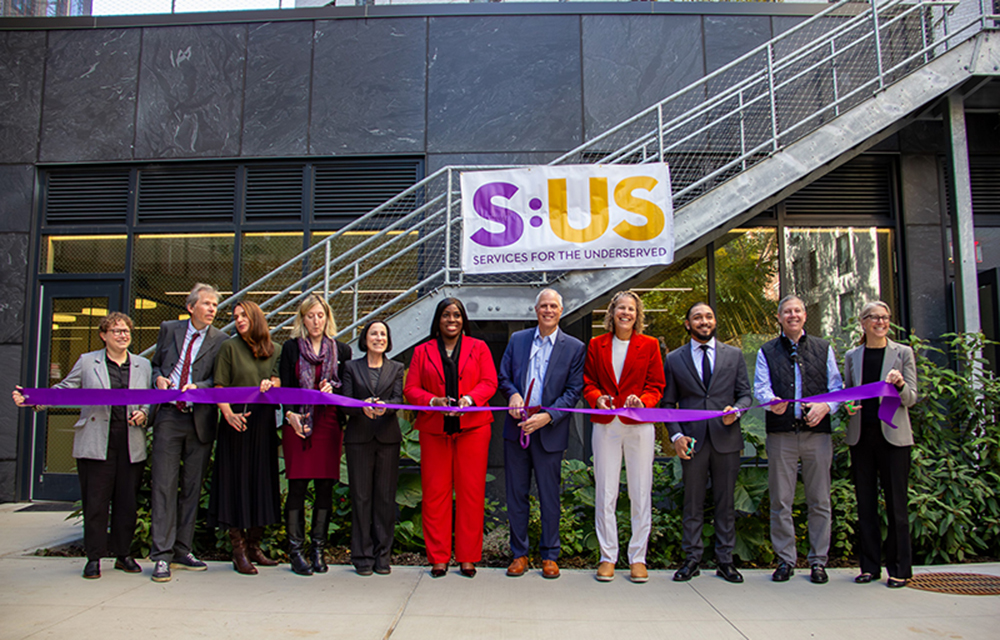
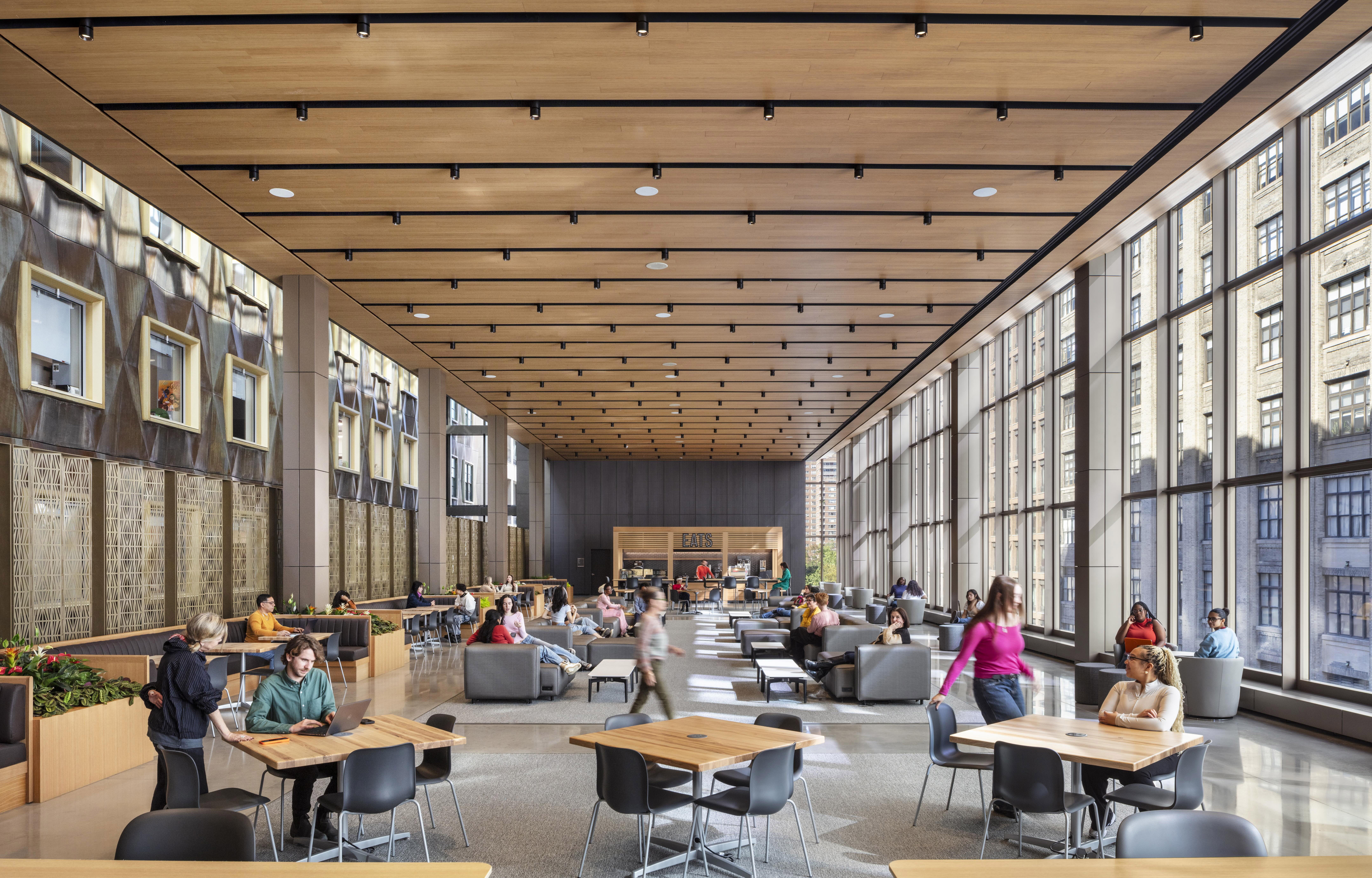
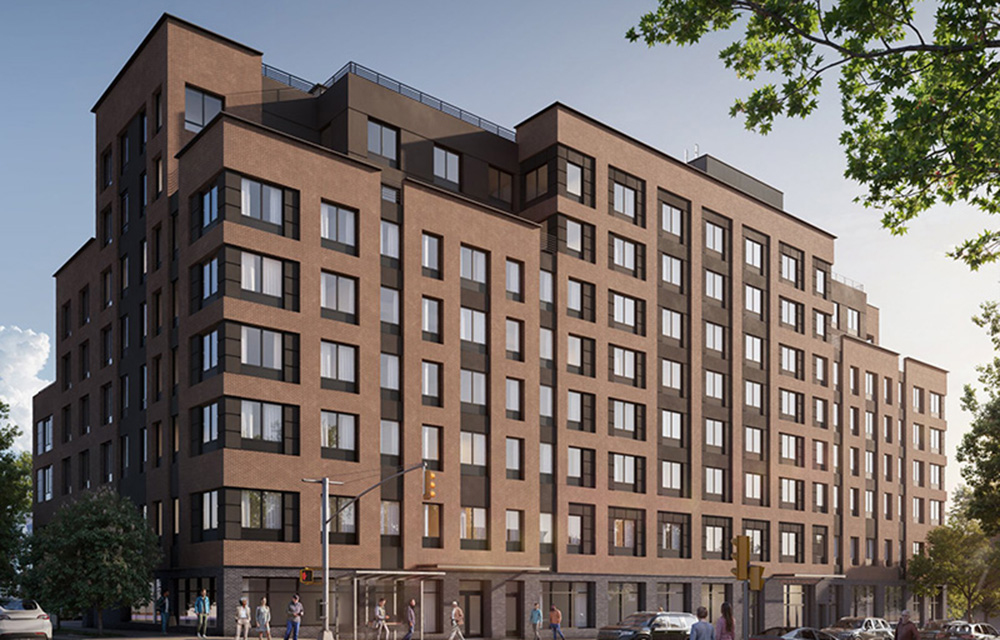

.gif)
.jpg)
.gif)
.gif)